Rosales
plant order
Introduction
 the rose order of dicotyledonous flowering plants, containing 9 families, 261 genera, and more than 7,700 species. Rosales, which is in the Rosid I group among the core eudicots, is related to other orders with members that can undergo nitrogen fixation (for example the legumes (legume) of the order Fabales). Rosales is a diverse order that includes families previously placed in the former orders Urticales and Rhamnales. The families in Rosales vary greatly in size, with about 93 percent of the species included in the four largest families: Rosaceae, Urticaceae, Moraceae, and Rhamnaceae. The order includes some of the best-known ornamental and edible-fruit plants in the temperate parts of the world. In addition to roses, Rosales includes elms (elm), spireas (spirea), hawthorns (hawthorn), apples (apple), peaches (peach), cherries (cherry), pears (pear), plums (plum), strawberries (strawberry), raspberries (raspberry), and figs (fig).
the rose order of dicotyledonous flowering plants, containing 9 families, 261 genera, and more than 7,700 species. Rosales, which is in the Rosid I group among the core eudicots, is related to other orders with members that can undergo nitrogen fixation (for example the legumes (legume) of the order Fabales). Rosales is a diverse order that includes families previously placed in the former orders Urticales and Rhamnales. The families in Rosales vary greatly in size, with about 93 percent of the species included in the four largest families: Rosaceae, Urticaceae, Moraceae, and Rhamnaceae. The order includes some of the best-known ornamental and edible-fruit plants in the temperate parts of the world. In addition to roses, Rosales includes elms (elm), spireas (spirea), hawthorns (hawthorn), apples (apple), peaches (peach), cherries (cherry), pears (pear), plums (plum), strawberries (strawberry), raspberries (raspberry), and figs (fig).Distribution and abundance
Members of Rosales grow abundantly throughout the world. Their distribution ranges from Arctic regions to the tropics, from sea level to high mountains, and from forests to grasslands and deserts. Representatives of this order are frequent, and sometimes dominant, members of a variety of ecological communities. While the order as a whole can be found almost anywhere in the world, the geographic distribution of specific families and genera is more restricted. Several types of distribution patterns are found, some based on geography, others on climate.
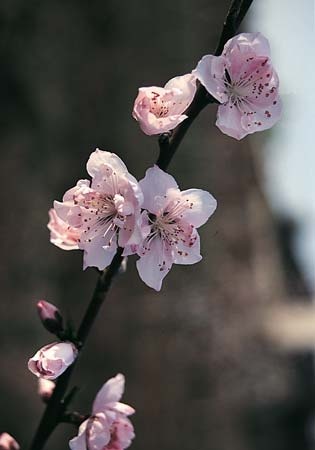 The vast majority of the 90 genera and some 2,500 species of Rosaceae, or the rose family, are found in the north temperate zone. A few groups are widespread across most of the zone; they can be found in a variety of habitats. For example, Prunus, which includes cherries (cherry), plums (plum), and peaches (peach), is one of the most widely distributed genera of the order. Prunus is most abundant in North America, Asia, and southern Europe but is also well represented in the subtropics, extending southward to Malaysia and northern Australia and through Central America to Brazil and Chile. Another widespread genus is Crataegus (hawthorns (hawthorn)), which is particularly abundant, in terms of both individuals and diverse forms, throughout eastern North America. Various kinds of hawthorns also exist westward across North America, southward to Mexico and the Andes Mountains, and throughout much of Europe, the Middle East, and Asia.
The vast majority of the 90 genera and some 2,500 species of Rosaceae, or the rose family, are found in the north temperate zone. A few groups are widespread across most of the zone; they can be found in a variety of habitats. For example, Prunus, which includes cherries (cherry), plums (plum), and peaches (peach), is one of the most widely distributed genera of the order. Prunus is most abundant in North America, Asia, and southern Europe but is also well represented in the subtropics, extending southward to Malaysia and northern Australia and through Central America to Brazil and Chile. Another widespread genus is Crataegus (hawthorns (hawthorn)), which is particularly abundant, in terms of both individuals and diverse forms, throughout eastern North America. Various kinds of hawthorns also exist westward across North America, southward to Mexico and the Andes Mountains, and throughout much of Europe, the Middle East, and Asia.Some genera and species in Rosaceae frequently grow on more than one continent, but there are discontinuities in their ranges. For instance, Waldsteinia fragarioides (barren strawberry) occurs in areas that are widely separated geographically: eastern North America, western North America, southeastern Europe, and East Asia. Physocarpus (ninebark) follows the same pattern, except that it is absent from Europe. This overall distribution pattern developed near the beginning of the Tertiary Period, about 60 million years ago, at which time the Bering Strait served as a bridge between western North America and Asia. North America and Europe as well were closer geographically than at present; there was a widespread forest across Europe, Asia, and North America, and over time plants could readily migrate between the regions. With subsequent changes in climate and the advance of glaciers (glacier) over much of the Northern Hemisphere, many plants that were broadly distributed became eliminated from some areas while persisting as relicts in others.
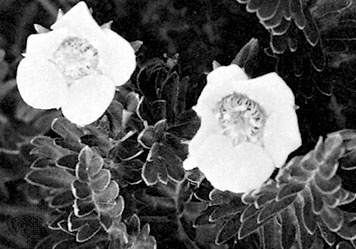 Other members of Rosaceae are distributed in temperate climates of both the Northern and Southern hemispheres but not in between. Fragaria chiloensis, a species of wild strawberry, is found in three discrete areas: Chile and Argentina, California northward to the Aleutian Islands, and the Hawaiian Islands. Geum ( avens) has a distribution ranging across North America, Europe, and East Asia, and some species grow in the Andes Mountains of South America, Patagonia, South Africa, Auckland Island, New Zealand, and Tasmania.
Other members of Rosaceae are distributed in temperate climates of both the Northern and Southern hemispheres but not in between. Fragaria chiloensis, a species of wild strawberry, is found in three discrete areas: Chile and Argentina, California northward to the Aleutian Islands, and the Hawaiian Islands. Geum ( avens) has a distribution ranging across North America, Europe, and East Asia, and some species grow in the Andes Mountains of South America, Patagonia, South Africa, Auckland Island, New Zealand, and Tasmania. Rhamnaceae, or the buckthorn family, which includes 52 genera and more than 900 species of shrubs and trees, is distributed worldwide, especially in the tropics and warm temperate region.
Rhamnaceae, or the buckthorn family, which includes 52 genera and more than 900 species of shrubs and trees, is distributed worldwide, especially in the tropics and warm temperate region.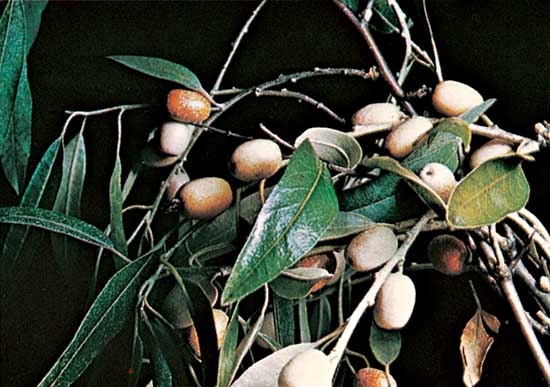 Elaeagnaceae, or the oleaster family, consisting of 3 genera and 45 species of shrubs and trees, is centred in the north temperate region and warm tropics, with extensions into Malesia and Australia.
Elaeagnaceae, or the oleaster family, consisting of 3 genera and 45 species of shrubs and trees, is centred in the north temperate region and warm tropics, with extensions into Malesia and Australia.Two small shrubby or woody families are restricted in their distributions. The monotypic Barbeyaceae (Barbeya oleoides) is known from northeast Africa and Arabia, whereas the two species of Dirachmaceae (Dirachma socotrana, D. somalensis) occur in Somalia and Socotra.
 Urticaceae, or the nettle family, is worldwide in distribution but most diverse in the tropics. Urticaceae contains 54 genera and more than 2,600 species, which are mostly herbs but are occasionally shrubs or even trees. Genera of the previously recognized family Cecropiaceae are now included in Urticaceae. The large genera Pilea (500–600 species) and Elatostema (300 species) are almost entirely tropical and subtropical. Some of the tropical and subtropical species of Urticaceae are shrubs or trees; many of the herbaceous species form dense ground covers in moist climates or grow as epiphytes (epiphyte) on moss-covered tree trunks and tree branches in humid regions. Although there are not many species in temperate areas, the often weedy family may occupy extensive areas and may become so dense as to prevent the growth of other species of plants. Urtica (nettles) can be especially common, widespread, and often abundant. Single plants of Urtica dioica (stinging nettle) are able to form extensive colonies within a short time by growing underground stems called rhizomes (rhizome). Members of Cecropia (75 species) have large palmately lobed leaves; these fast-growing “pioneer trees” are prominent in disturbed areas in the Neotropics.
Urticaceae, or the nettle family, is worldwide in distribution but most diverse in the tropics. Urticaceae contains 54 genera and more than 2,600 species, which are mostly herbs but are occasionally shrubs or even trees. Genera of the previously recognized family Cecropiaceae are now included in Urticaceae. The large genera Pilea (500–600 species) and Elatostema (300 species) are almost entirely tropical and subtropical. Some of the tropical and subtropical species of Urticaceae are shrubs or trees; many of the herbaceous species form dense ground covers in moist climates or grow as epiphytes (epiphyte) on moss-covered tree trunks and tree branches in humid regions. Although there are not many species in temperate areas, the often weedy family may occupy extensive areas and may become so dense as to prevent the growth of other species of plants. Urtica (nettles) can be especially common, widespread, and often abundant. Single plants of Urtica dioica (stinging nettle) are able to form extensive colonies within a short time by growing underground stems called rhizomes (rhizome). Members of Cecropia (75 species) have large palmately lobed leaves; these fast-growing “pioneer trees” are prominent in disturbed areas in the Neotropics.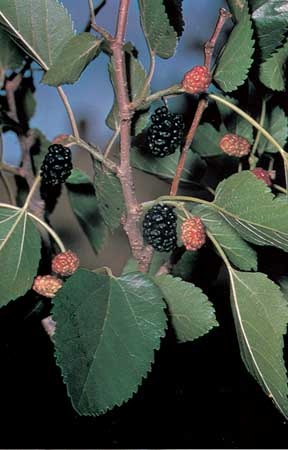
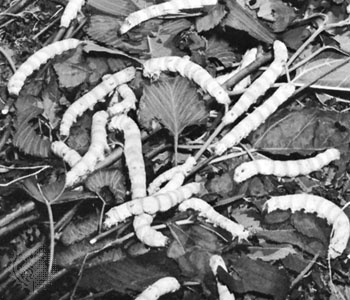
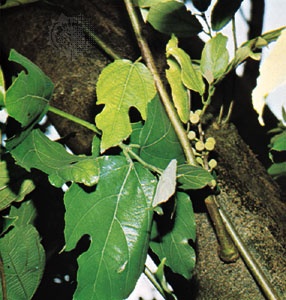 Moraceae, or the mulberry family, contains 38 genera and about 1,100 species. The family is found principally in the tropics and subtropics, but a few genera, such as Morus (mulberry), the food plant of Bombyx mori ( silkworm moth), and Broussonetia papyrifera (paper mulberry), a source of fibres for paper in Asia, are primarily distributed in temperate regions. Ficus (about 750 species) is the largest genus in the family. It is a taxonomically complex genus that includes trees, shrubs, lianas (liana), and strangler figs.
Moraceae, or the mulberry family, contains 38 genera and about 1,100 species. The family is found principally in the tropics and subtropics, but a few genera, such as Morus (mulberry), the food plant of Bombyx mori ( silkworm moth), and Broussonetia papyrifera (paper mulberry), a source of fibres for paper in Asia, are primarily distributed in temperate regions. Ficus (about 750 species) is the largest genus in the family. It is a taxonomically complex genus that includes trees, shrubs, lianas (liana), and strangler figs.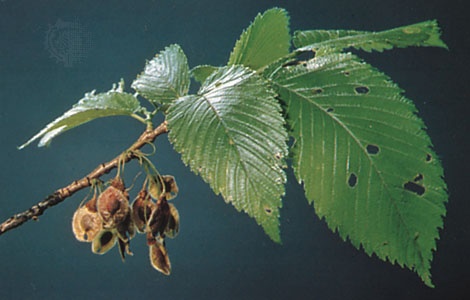 Ulmaceae, or the elm family, contains about 35 species, all woody, in 6 genera. The family is widely distributed in the north temperate zone, especially Asia. Ulmus (elms) is the largest genus in the family. Elms are found primarily in the north temperate areas but extend as far south as the Himalayas and Indochina in Asia and Mexico in North America. Zelkova (four to five species) has a discontinuous distribution and is found from the eastern Mediterranean region to the Caucasus and in East Asia. The genus once had a much wider distribution, dating back about 65 million years ago to the Tertiary Period, and is known in the fossil record from several sites in North America and Eurasia.
Ulmaceae, or the elm family, contains about 35 species, all woody, in 6 genera. The family is widely distributed in the north temperate zone, especially Asia. Ulmus (elms) is the largest genus in the family. Elms are found primarily in the north temperate areas but extend as far south as the Himalayas and Indochina in Asia and Mexico in North America. Zelkova (four to five species) has a discontinuous distribution and is found from the eastern Mediterranean region to the Caucasus and in East Asia. The genus once had a much wider distribution, dating back about 65 million years ago to the Tertiary Period, and is known in the fossil record from several sites in North America and Eurasia.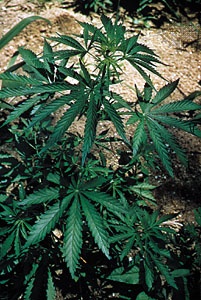 Cannabaceae, or the hemp family, which includes the 9 genera of the former family Celtidaceae, consists of 11 genera and about 170 species. Most members of the family are trees, though Cannabis sativa (hemp) is a coarse, erect annual herb, and the three species of Humulus (hops (hop)) are twining or scrambling herbs. Celtis ( hackberry) is the largest genus in the family, with about 100 species distributed in the Northern Hemisphere and in southern Africa.
Cannabaceae, or the hemp family, which includes the 9 genera of the former family Celtidaceae, consists of 11 genera and about 170 species. Most members of the family are trees, though Cannabis sativa (hemp) is a coarse, erect annual herb, and the three species of Humulus (hops (hop)) are twining or scrambling herbs. Celtis ( hackberry) is the largest genus in the family, with about 100 species distributed in the Northern Hemisphere and in southern Africa.Economic and ecological importance
Rosaceae
Fruit species
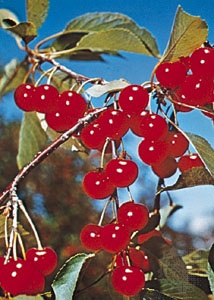 Rosaceae is perhaps the third most economically important group, after Poaceae, or the grass family, and Fabales, or the legume order. While no member of Rosaceae is a staple food, the diets of many people are enriched by its fruits. Cherries (cherry), peaches (peach), apricots (apricot), nectarines (nectarine), plums (plum), and almonds (almond) are fruits from species of Prunus, and blackberries (blackberry), raspberries (raspberry), loganberries (loganberry), and dewberries (dewberry) are species from Rubus.
Rosaceae is perhaps the third most economically important group, after Poaceae, or the grass family, and Fabales, or the legume order. While no member of Rosaceae is a staple food, the diets of many people are enriched by its fruits. Cherries (cherry), peaches (peach), apricots (apricot), nectarines (nectarine), plums (plum), and almonds (almond) are fruits from species of Prunus, and blackberries (blackberry), raspberries (raspberry), loganberries (loganberry), and dewberries (dewberry) are species from Rubus.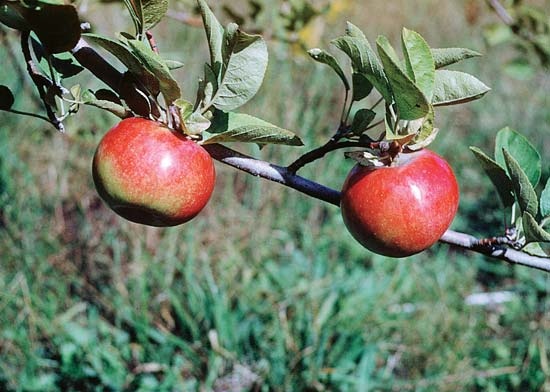 Apples (apple), pears (pear), quinces (quince), and strawberries (strawberry) also belong to the rose family. Apples (Malus domestica) make up about half the fruit-tree production in temperate climates. Contrary to the popular saying “as American as apple pie,” the commercially grown apple is a native of the Old World, probably originating in western Asia. While more than 6,500 varieties of apples have been named, very few are widely available for sale in supermarkets.
Apples (apple), pears (pear), quinces (quince), and strawberries (strawberry) also belong to the rose family. Apples (Malus domestica) make up about half the fruit-tree production in temperate climates. Contrary to the popular saying “as American as apple pie,” the commercially grown apple is a native of the Old World, probably originating in western Asia. While more than 6,500 varieties of apples have been named, very few are widely available for sale in supermarkets.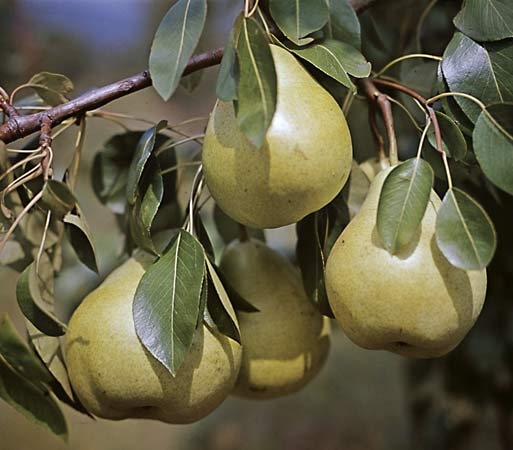 Pears (pear) (Pyrus communis) have long been a favourite fruit in Europe, and they have become more popular in North America as a wider selection of juicy and flavourful varieties have been grown commercially.
Pears (pear) (Pyrus communis) have long been a favourite fruit in Europe, and they have become more popular in North America as a wider selection of juicy and flavourful varieties have been grown commercially. Quinces (quince) (Cydonia oblonga) are better appreciated in the warmer parts of Europe than in North America. The flesh of quince is extremely fragrant but hard, gritty, and generally too tart to eat fresh; hence, most quince is made into jelly, jam, and marmalade. In Turkey, finely ground quince pulp is mixed with sugar, cooked, and spread out to dry, forming the gummy or jellylike confection known as Turkish delight.
Quinces (quince) (Cydonia oblonga) are better appreciated in the warmer parts of Europe than in North America. The flesh of quince is extremely fragrant but hard, gritty, and generally too tart to eat fresh; hence, most quince is made into jelly, jam, and marmalade. In Turkey, finely ground quince pulp is mixed with sugar, cooked, and spread out to dry, forming the gummy or jellylike confection known as Turkish delight.The cultivated strawberry is a favourite fruit, but the modern cultivated strawberry is very different from the wild types. About a dozen species of strawberries are distributed in the north temperate zone, extending southward in the mountain ranges of Central and South America. Among the plants that explorers sent back to Europe in the mid-18th century were wild strawberries (Fragaria chiloensis) from Chile. These proved to be barren in European gardens because the plants that were sent had only female flowers. Meanwhile, wild strawberry plants (F. virginiana) from the eastern United States were sent to France. In a botanical garden in Paris, it was found that pollen of the latter would cause the Chilean strawberry to set fruit. Plants grown from the seeds of these fruits produced much larger fruit, and it was realized that a new hybrid type of strawberry had developed (Fragaria ×ananassa). Modern cultivated strawberries are developed from this hybrid and similar crosses between these two wild species.
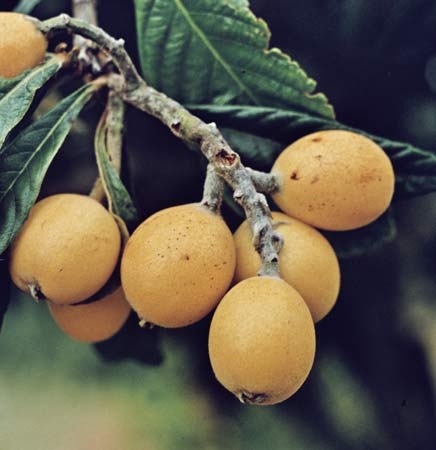 Originally from central China, loquat (Eriobotrya japonica) is widely cultivated in southern Florida, in California, and in warm regions throughout the world. The succulent yellow-orange fruits are about 5 cm (2 inches) long, have a pleasant, mildly acidic taste, and are eaten fresh, stewed, or used to make jelly and jam. A liqueur is made from the fruits in Bermuda. A delicately flavoured jelly can be made from the partly ripe fruits.
Originally from central China, loquat (Eriobotrya japonica) is widely cultivated in southern Florida, in California, and in warm regions throughout the world. The succulent yellow-orange fruits are about 5 cm (2 inches) long, have a pleasant, mildly acidic taste, and are eaten fresh, stewed, or used to make jelly and jam. A liqueur is made from the fruits in Bermuda. A delicately flavoured jelly can be made from the partly ripe fruits.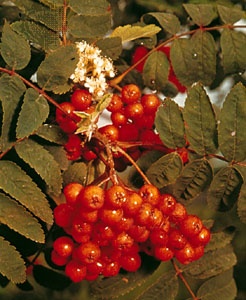 Besides providing food for humans, the fruits of many members of the rose family are important elements in the diets of wildlife. The fleshy fruits of Sorbus (mountain ashes), Prunus (cherries and plums), Malus (crab apples (crab apple)), Crataegus (hawthorns), and Amelanchier (shadbush) are relished by birds, and strawberries are a favourite food of turtles and other ground-dwelling animals. The thick, dense thorny plants of hawthorns and brambles provide excellent cover for wild animals. In the dry areas of western North America, Cercocarpus ( mountain mahogany), Cowania (cliff rose), and Purshia (bitterbrush) are important browse plants for deer and other mammals.
Besides providing food for humans, the fruits of many members of the rose family are important elements in the diets of wildlife. The fleshy fruits of Sorbus (mountain ashes), Prunus (cherries and plums), Malus (crab apples (crab apple)), Crataegus (hawthorns), and Amelanchier (shadbush) are relished by birds, and strawberries are a favourite food of turtles and other ground-dwelling animals. The thick, dense thorny plants of hawthorns and brambles provide excellent cover for wild animals. In the dry areas of western North America, Cercocarpus ( mountain mahogany), Cowania (cliff rose), and Purshia (bitterbrush) are important browse plants for deer and other mammals.Ornamental species
 A large number of ornamental plants widely cultivated in temperate regions belong to Rosaceae. Small- to medium-size trees and shrubs grown for their flowers or fruit include spirea, meadowsweet, and hardhack from Spiraea; Exochorda (pearlbush); Rhodotypos (jetbread); Malus (apples (apple), crab apples (crab apple)); Prunus ( cherry); Amelanchier (serviceberry); Cotoneaster (cotoneaster); Pyracantha (fire thorns); mountain ashes (mountain ash), rowan trees, and whitebeams from Sorbus; Photinia; and Heteromeles (Christmas berry).
A large number of ornamental plants widely cultivated in temperate regions belong to Rosaceae. Small- to medium-size trees and shrubs grown for their flowers or fruit include spirea, meadowsweet, and hardhack from Spiraea; Exochorda (pearlbush); Rhodotypos (jetbread); Malus (apples (apple), crab apples (crab apple)); Prunus ( cherry); Amelanchier (serviceberry); Cotoneaster (cotoneaster); Pyracantha (fire thorns); mountain ashes (mountain ash), rowan trees, and whitebeams from Sorbus; Photinia; and Heteromeles (Christmas berry). None of these plants, however, is more widespread or appreciated than the cultivated roses (rose) (genus Rosa), which have long been one of the favourite flowers of peoples of many lands and cultures. Roses often figure in song, poetry, literature, painting, and even historical events; the cottage rose (Rosa ×alba) was adopted as a symbol by the Yorkists in the English Wars of the Roses (Roses, Wars of the). There are perhaps 120 species of wild roses, and over the centuries humans have deliberately selected and bred these wild roses to produce a wide variety of cultivated roses.
None of these plants, however, is more widespread or appreciated than the cultivated roses (rose) (genus Rosa), which have long been one of the favourite flowers of peoples of many lands and cultures. Roses often figure in song, poetry, literature, painting, and even historical events; the cottage rose (Rosa ×alba) was adopted as a symbol by the Yorkists in the English Wars of the Roses (Roses, Wars of the). There are perhaps 120 species of wild roses, and over the centuries humans have deliberately selected and bred these wild roses to produce a wide variety of cultivated roses.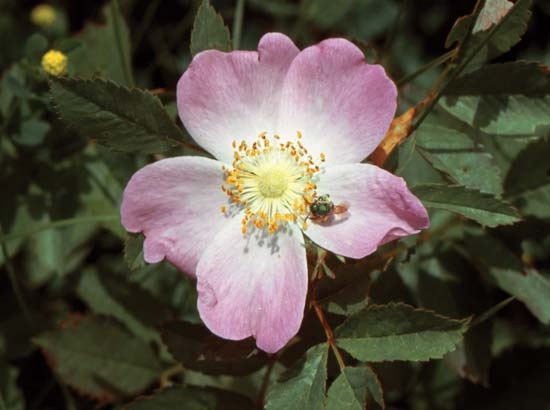 The roses commonly grown today fall into several categories. Many wild species, or direct descendants of them, are grown as species roses. Examples include Austrian Copper rose (Rosa foetida, variety bicolor); Father Hugo rose (R. hugonis); saltspray, or rugosa, rose (R. rugosa); red-leaved rose (R. rubifolia); Scotch rose (R. spinosissima); and Harison's yellow rose, or yellow-rose-of-Texas (Rosa ×harisonii). Old roses, as a group, are various sports, mutations, or hybrids of species roses. A few types of old roses are the alba, or cottage, roses, derived from Rosa ×alba; the damasks, originating from R. damascena; the French, or gallica, roses, from R. gallica; the hybrid musks, from R. moschata; and the cabbage, or Provence, roses, from R. centifolia. The moss rose, with its sepals and flower stalks covered with dense mosslike hairs, is a mutation of the cabbage rose.
The roses commonly grown today fall into several categories. Many wild species, or direct descendants of them, are grown as species roses. Examples include Austrian Copper rose (Rosa foetida, variety bicolor); Father Hugo rose (R. hugonis); saltspray, or rugosa, rose (R. rugosa); red-leaved rose (R. rubifolia); Scotch rose (R. spinosissima); and Harison's yellow rose, or yellow-rose-of-Texas (Rosa ×harisonii). Old roses, as a group, are various sports, mutations, or hybrids of species roses. A few types of old roses are the alba, or cottage, roses, derived from Rosa ×alba; the damasks, originating from R. damascena; the French, or gallica, roses, from R. gallica; the hybrid musks, from R. moschata; and the cabbage, or Provence, roses, from R. centifolia. The moss rose, with its sepals and flower stalks covered with dense mosslike hairs, is a mutation of the cabbage rose.Perhaps the most familiar cultivated roses are the hybrid teas. These are of complex hybrid origins, involving up to seven wild species. In this breeding process, roses from East Asia were crossed with those from Europe. The flowers of Asiatic roses have urn-shaped buds, high-centred open flowers, and a peppery scent or the fragrance of crushed tea leaves. The Asiatic roses blossom heavily throughout the growing season, but they cannot withstand extreme winter temperatures. Some have a rather vinelike climbing habit. European roses, on the other hand, are much more winter-hardy, usually produce only one flush of blooms in the spring, and have flat flowers with little fragrance. The Bourbon, Portland, hybrid China, tea, and hybrid perpetual roses are the products of the many crosses made between Asiatic and European roses. Hybrid tea roses emerged primarily from crosses between tea and hybrid perpetual roses.
Floribunda roses, with clusters of numerous rather small flowers, have their basic origin in crosses between hybrid teas and ultimately R. multiflora, while grandiflora roses are hybrids between floribundas and hybrid teas. Consequently, grandifloras have flowers that are larger and less numerous than floribundas but that are smaller and more plentiful than hybrid teas.
Today, garden roses have a wide range of colours, but this was not always the case. In the 19th century, roses exhibited a continuous range from white to pink through dark mauve-red, with some soft yellows. The first bright yellow garden rose was introduced in the early 1900s, as a result of hybridizing the cultivated variety Antoine Ducher with the Persian yellow rose (R. foetida, variety persiana). While people often speak of “red” roses, true bright red roses are a relatively recent phenomenon. There are no wild species of roses with red flowers; in fact, red flowers are absent from the whole rose family. This is because the family lacked the gene for the pure red pelargonidin pigment. However, a natural genetic mutation occurred about 1930 that produced pelargonidin. Through rose-breeding programs, this gene was rapidly incorporated into modern cultivated roses, resulting in the vibrant red colours seen today.
One flower colour still missing in roses (both wild and cultivated) is blue, again because the gene for producing the proper pigment, delphinidin in the case of blue, is lacking in the rose family. Scientists are currently attempting to use genetic engineering methods to transfer the delphinidin gene from Petunia (petunias (petunia), family Solanaceae) or Delphinium (delphiniums (Delphinium), family Ranunculaceae) to roses.
Flowers of certain roses are wonderfully fragrant. Rose petals from the damask rose (Rosa damascena) or the cabbage rose (R. centifolia) are placed in a still and subjected to distillation, which extracts the volatile oils and produces attar of roses, a major ingredient in many perfumes. It is costly to produce: 4,000 kg (8,800 pounds) of rose flowers yield only a single kilogram of attar of roses. The water that remains after distillation has some rose fragrance and is sold as rose water. Dried rose petals kept in potpourri jars or among clothing items slowly release their fragrance.
Perennial borders contain many herbaceous representatives of the rose order. A few garden favourites are Aruncus dioicus ( goatsbeard), Agrimonia ( agrimony), Alchemilla ( lady's mantle), Dalibarda (Indian strawberry), Geum ( avens), Filipendula (queen of the prairie, meadowsweet, and dropwort), Potentilla ( cinquefoil), and Sanguisorba ( burnet).
wood
 The wood of Prunus serotina (black cherry) and P. avium (European wild, or sweet, cherry) is used to make high-quality furniture, and the wood of Pyrus communis ( pear) is also highly valued. The wood of black cherry, native to North America, has a reddish brown colour and a warm luster when finished. It resists shrinkage and warping and has excellent working properties. Black cherry is a favourite wood for furniture, paneling, woodenware, tool handles, and musical instruments. Wood of the European wild cherry is brownish with a golden sheen and is used for high-quality furniture, either as solid cherrywood or cherry veneer.
The wood of Prunus serotina (black cherry) and P. avium (European wild, or sweet, cherry) is used to make high-quality furniture, and the wood of Pyrus communis ( pear) is also highly valued. The wood of black cherry, native to North America, has a reddish brown colour and a warm luster when finished. It resists shrinkage and warping and has excellent working properties. Black cherry is a favourite wood for furniture, paneling, woodenware, tool handles, and musical instruments. Wood of the European wild cherry is brownish with a golden sheen and is used for high-quality furniture, either as solid cherrywood or cherry veneer.Pearwood has a rich pinkish red colour and a very smooth grain. Because pearwood has a smooth, hard, and stable surface, it was formerly widely used for rulers, T-squares, and drawing boards. Although plastics have generally replaced it for these uses, pearwood is still used for bowls and other kinds of wooden tableware and in making veneers. Because of its colour, pearwood is often used in marquetry work.
Malus domestica ( apple) produces wood that is reddish brown, hard, and rather heavy. It is prone to warping and splitting if not dried carefully, but properly cured applewood is used in the heads of the best golf clubs.
Chemicals
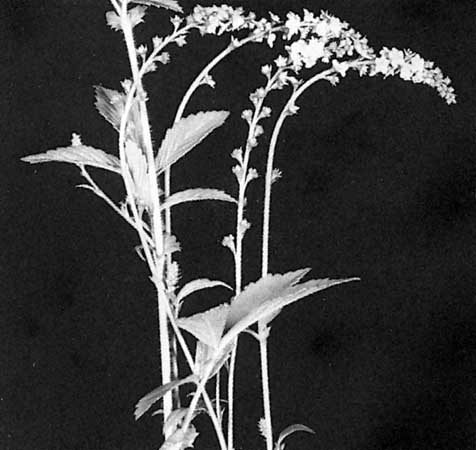 Many plants from the rose family are used locally as medicines in different parts of the world. Although several remedies have been ascribed to these plants, it remains to be proved scientifically that more than a few have therapeutic value. A tea or infusion made from Fragaria (strawberries (strawberry)), Holodiscus discolor (ocean spray) flowers, and the bark of Malus fusca ( crab apple) was used by Native Americans in Washington state to treat diarrhea. Other North American Indians used decoctions from blackberries (blackberry) and raspberries (raspberry) for the same purpose. Agrimonia eupatoria (common agrimony) from Europe was looked upon in past ages as a general cure for any sort of wound or snakebite and for wart removal, liver ailments, and diarrhea.
Many plants from the rose family are used locally as medicines in different parts of the world. Although several remedies have been ascribed to these plants, it remains to be proved scientifically that more than a few have therapeutic value. A tea or infusion made from Fragaria (strawberries (strawberry)), Holodiscus discolor (ocean spray) flowers, and the bark of Malus fusca ( crab apple) was used by Native Americans in Washington state to treat diarrhea. Other North American Indians used decoctions from blackberries (blackberry) and raspberries (raspberry) for the same purpose. Agrimonia eupatoria (common agrimony) from Europe was looked upon in past ages as a general cure for any sort of wound or snakebite and for wart removal, liver ailments, and diarrhea.Plants of a number of species of the rose family contain dangerous cyanide compounds called cyanogenetic glycosides (glycosides capable of releasing hydrogen cyanide gas upon hydrolysis). The best known is amygdalin, which upon hydrolysis yields sugar, benzaldehyde, and cyanide. Benzaldehyde is a nonpoisonous compound providing almond, or amaretto, flavour and aroma. Cyanide, however, is a dangerous poison that blocks the activity of an enzyme that is directly involved in oxygen uptake during respiration, resulting in cyanosis and asphyxiation. Amygdalin develops in the seeds and pits of many plants, including cherries, plums, apricots, and apples. Hence, these seeds are potentially dangerous when consumed in quantity. Peach pits, bitter almonds, and several kinds of wild cherry are poisonous to animals and humans. Almonds, which come from the pits of Prunus amygdalus, are of two kinds, bitter and sweet. Almond oil, used for flavouring, is extracted from the bitter almond. The crude oil contains considerable amygdalin and is poisonous, but this is removed during refining. The almonds eaten as nuts come from sweet almond varieties, which do not contain amygdalin and are safe to eat. Cyanogenic compounds also appear in the leaves of many of the rose family. Wilted or damaged leaves contain the highest concentrations. The foliage of Prunus virginiana ( chokecherry), P. serotina (wild black cherry), and species of Cercocarpus ( mountain mahogany) are sometimes fatal to browsing animals.
Rhamnaceae
The best-known member of Rhamnaceae, or the buckthorn family, is Ziziphus jujuba (Chinese jujube), a valuable timber tree that grows in dry alkaline soil. Valuable timber is derived from several other species, including Maesopsis eminii (African umbrella tree), Ziziphus mauritiana (Indian jujube, or Chinese apple), Z. spina-christi (Arabian jujube), and Pomaderris apetala (Australian hazel).
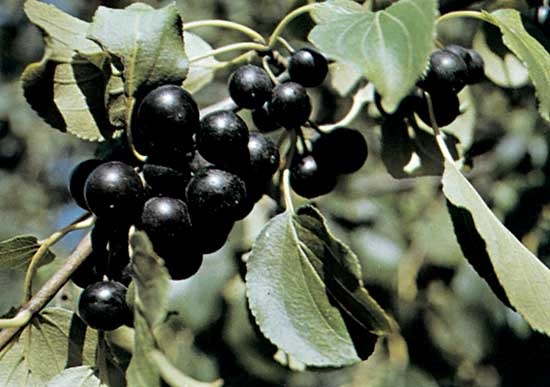 Although most members of Rhamnaceae are not large enough to supply lumber, the family yields various other products, such as cascara sagrada (a cathartic made from the bark of Rhamnus purshiana, the California bearberry) and the green dye lokao, a natural dye that colours cotton a true green. Other members of Rhamnaceae are components of chaparral—a plant association essential to erosion and flood control. Rhamnus californica and R. crocea, the redberry evergreen shrubs, are used as ornamentals. Other species introduced from Eurasia into North America, such as Rhamnus cathartica and R. frangula, have become serious pest plants that take over the understories of native forests.
Although most members of Rhamnaceae are not large enough to supply lumber, the family yields various other products, such as cascara sagrada (a cathartic made from the bark of Rhamnus purshiana, the California bearberry) and the green dye lokao, a natural dye that colours cotton a true green. Other members of Rhamnaceae are components of chaparral—a plant association essential to erosion and flood control. Rhamnus californica and R. crocea, the redberry evergreen shrubs, are used as ornamentals. Other species introduced from Eurasia into North America, such as Rhamnus cathartica and R. frangula, have become serious pest plants that take over the understories of native forests. Moraceae
Moraceae, or the mulberry family, contains several highly valued tropical species long cultivated for their fruits. Ficus ( fig) is considered to be one of the first foods to be preserved by drying. Production of Ficus carica, the principal fig grown commercially as food, is highest in the Mediterranean region (Turkey, Greece, and Italy) and the United States.
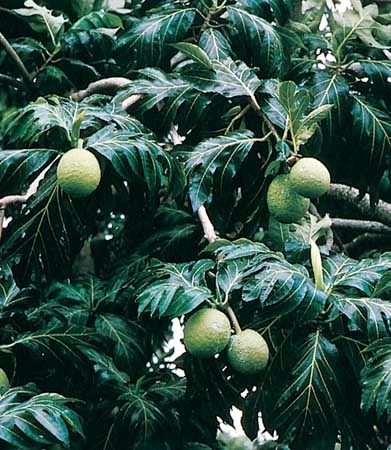 Artocarpus altilis ( breadfruit) is an extremely important food source throughout Southeast Asia and the Pacific; more recently it has been widely cultivated in the Neotropics and in Africa. The fruit, usually about the size of a grapefruit and seedless, consists of a starchy, pulpy white mass that is customarily cooked before eating. In the seeded form, the seeds are boiled or roasted and have a flavour similar to that of the chestnut.
Artocarpus altilis ( breadfruit) is an extremely important food source throughout Southeast Asia and the Pacific; more recently it has been widely cultivated in the Neotropics and in Africa. The fruit, usually about the size of a grapefruit and seedless, consists of a starchy, pulpy white mass that is customarily cooked before eating. In the seeded form, the seeds are boiled or roasted and have a flavour similar to that of the chestnut.Artocarpus heterophyllus ( jackfruit) bears one of the largest known edible fruits and has been cultivated for centuries throughout much of southern Asia. While it has not gained the popularity of the breadfruit, its pulp and seeds are used in cooking.
A number of lesser fruits of the order also are eaten; examples include the Brosimum alicastrum ( breadnut), Morus alba (white mulberry), M. rubra (red mulberry), and M. nigra (black mulberry).
In addition to food plants such as Ficus carica (common fig), Ficus contains many ornamentals: F. elastica ( India rubber plant), F. benjamina (weeping fig), F. sycomorus (sycamore fig), and F. religiosa ( Bo tree, or sacred fig), which has religious significance to Buddhists and Hindus and under which the Buddha is believed to have attained enlightenment.
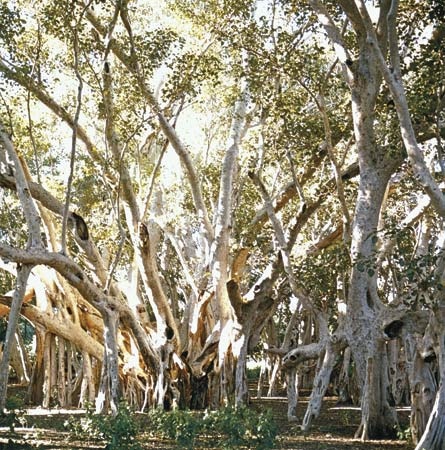 F. benghalensis ( banyan) spreads by dropping aerial roots from the branches to the ground to become accessory trunks. The branches continue to grow horizontally, and a single individual eventually resembles a grove of trees. The famous banyan in the Indian Botanic Garden in Kolkata (Calcutta) is more than 300 metres (almost 1,000 feet) in circumference.
F. benghalensis ( banyan) spreads by dropping aerial roots from the branches to the ground to become accessory trunks. The branches continue to grow horizontally, and a single individual eventually resembles a grove of trees. The famous banyan in the Indian Botanic Garden in Kolkata (Calcutta) is more than 300 metres (almost 1,000 feet) in circumference.Moraceae contains a number of latex-producing plants. Ficus elastica was used as an early source of rubber before synthetic rubber was invented. Latex from Ficus species and Artocarpus altilis is employed in chewing gums, glues, caulking compounds, and birdlime—a sticky substance used to ensnare birds. Brosimum galactodendron (cow tree or milk tree) produces an abundance of latex similar in taste to ordinary milk.
 The latex of Ficus glabrata and F. laurifolia contains the proteolytic enzyme ficin, which digests Ascaris lumbricoides (roundworm, or nematode), the agent of ascariasis, without harming the human host. It is used extensively in South America and Panama. Ficus species in Fiji and China are used to treat toothache. The latex of Antiaris toxicaria (upas tree) contains an extremely toxic cardiac glycoside, which has the effect of increasing the force of contraction of the muscles of the heart; in tropical Asia it is a valuable source of poison for arrows and darts. Maclura pomifera ( Osage orange), of central North America, is suspected of being toxic to livestock; its milky latex can also irritate skin.
The latex of Ficus glabrata and F. laurifolia contains the proteolytic enzyme ficin, which digests Ascaris lumbricoides (roundworm, or nematode), the agent of ascariasis, without harming the human host. It is used extensively in South America and Panama. Ficus species in Fiji and China are used to treat toothache. The latex of Antiaris toxicaria (upas tree) contains an extremely toxic cardiac glycoside, which has the effect of increasing the force of contraction of the muscles of the heart; in tropical Asia it is a valuable source of poison for arrows and darts. Maclura pomifera ( Osage orange), of central North America, is suspected of being toxic to livestock; its milky latex can also irritate skin.Several genera in the mulberry family are valuable sources of timber. In Africa the wood of Antiaris, while not highly durable, is suitable for veneer and plywood, furniture components, and light construction. Two species of iroko (iroko wood), Chlorophora excelsa and C. regia, cover the breadth of tropical Africa and produce durable heartwood used in joinery, boatbuilding and marine work, flooring, furniture, and veneer; it is often used as a substitute for oak and teak. Another species in tropical America, C. tinctoria ( fustic), is used in heavy construction, planking, and flooring. In Southeast Asia and Oceania, species of Artocarpus, the same genus cultivated for the breadfruits and jackfruits, produce woods of variable durability used in joinery, furniture and cabinetwork, and musical instruments. In the American tropics, Bagassa, Brosimum, Clarisia, Helicostylis, and Poulsenia are all sources of wood for general construction. Brosimum guianense (letterwood, also called leopardwood or snakewood) is employed in inlays, turnery, fancy handles for cutlery, and violin bows. B. paraense (Brazilian redwood) is used for furniture. Species of Trophis are used locally in Venezuela.
Urticaceae
Several members of Urticaceae, or the nettle family, yield fibres. The fibre of Boehmeria nivea ( ramie) is currently cultivated mainly in China, the Philippines, and Brazil. Because the fibres must be separated from gums and pectins within the plant before they can be spun, the extraction process is more complicated than that for flax or Jute; however, the tensile strength of ramie compares well with that of cotton, flax, and hemp, and it is especially suitable for blending with synthetic fibres. The fibres also are used to produce papers, cordage, and industrial bagging. Other plants with fibres like those of ramie are sometimes used as substitutes; they include Sarcochlamys pulcherrima (dogal tree) and Pouzolzia occidentalis (Coamo River pouzolzsbush). Touchardia latifolia (olona) was formerly an important fibre plant of Hawaii, used for cloth, cordage, and especially fishnets because of its durability in water.
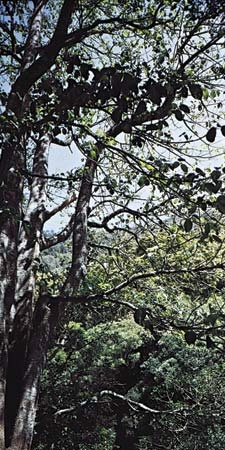 The irritants in the stinging hairs or spines of many genera in Urticaceae, including Laportea gigas (Australian nettle tree), Hesperocnide, Urera, and Urtica (nettle), cause painful inflammatory skin reactions that can last from a few seconds to several days. The light wood of Musanga cecropioides (umbrella tree) is used as a substitute for cork in floats and rafts, insulation, and model making; it is a short-lived tree, suitable for plantation culture.
The irritants in the stinging hairs or spines of many genera in Urticaceae, including Laportea gigas (Australian nettle tree), Hesperocnide, Urera, and Urtica (nettle), cause painful inflammatory skin reactions that can last from a few seconds to several days. The light wood of Musanga cecropioides (umbrella tree) is used as a substitute for cork in floats and rafts, insulation, and model making; it is a short-lived tree, suitable for plantation culture.Cecropia peltata (trumpetwood) resembles the North American Populus trichocarpa (black cottonwood; family Salicaceae) in density and mechanical properties and is used in making boxes, plywood, and particleboard stock. A symbiotic relationship exists between species of cecropia and ants of the genus Azteca. The ants establish colonies within the hollow trunks and stems of the Cecropia plants. The ants consume glycogen (an energy source generally produced by animals) and proteinaceous substances made by these trees. This food is continually replaced as it is eaten. There are thin areas in the stem walls through which the fertile female ants burrow to lay their eggs inside the stem. The ants provide a form of protection for the tree by viciously attacking and biting insects that would otherwise eat the plant and animals that would brush against it. The ants chew through vines that twine around their host and clear away other vegetation that comes in contact with and threatens to shade the Cecropia plants. Other Cecropia plants that do not harbour Azteca ants are protected against leaf-cutting ants by a thick coating of wax on the stem, which prevents the latter from climbing up.
Ulmaceae
 In Ulmaceae, or the elm family, most species of Ulmus (elm) produce a superior timber with a distinctive grain and a strong resistance to decay; several species in North America provide wood for boxes, baskets, veneer for fruit and vegetable containers, and the bent parts in furniture. U. americana (American elm), once an important street tree prized for its graceful form and stature, has been nearly eliminated by Dutch elm disease. In tropical America, Phyllostylon brasiliensis (San Domingo boxwood) has been suggested as a substitute for true boxwood (Buxus). It produces a fine-textured, lemon-yellow, straight-grained wood valued for the high polish it will accept; stained black, it has been used as a substitute for true ebony. The wood of Planera aquatica (water elm) is fragrant and is used in cabinetmaking.
In Ulmaceae, or the elm family, most species of Ulmus (elm) produce a superior timber with a distinctive grain and a strong resistance to decay; several species in North America provide wood for boxes, baskets, veneer for fruit and vegetable containers, and the bent parts in furniture. U. americana (American elm), once an important street tree prized for its graceful form and stature, has been nearly eliminated by Dutch elm disease. In tropical America, Phyllostylon brasiliensis (San Domingo boxwood) has been suggested as a substitute for true boxwood (Buxus). It produces a fine-textured, lemon-yellow, straight-grained wood valued for the high polish it will accept; stained black, it has been used as a substitute for true ebony. The wood of Planera aquatica (water elm) is fragrant and is used in cabinetmaking. Cannabaceae
 Cannabaceae, or the hemp family, also has some timber species. Celtis ( hackberry) wood, similar to that of elm in structure, is usually cut into lumber for furniture and containers; C. mildbraedii of western, central, and eastern Africa, while not durable, has good strength properties and can be used for flooring, commercial plywood, and veneer. The lightweight wood of Chaetachme microcarpa, a shrub of central and southern Africa, is used for the manufacture of guitars and other musical instruments.
Cannabaceae, or the hemp family, also has some timber species. Celtis ( hackberry) wood, similar to that of elm in structure, is usually cut into lumber for furniture and containers; C. mildbraedii of western, central, and eastern Africa, while not durable, has good strength properties and can be used for flooring, commercial plywood, and veneer. The lightweight wood of Chaetachme microcarpa, a shrub of central and southern Africa, is used for the manufacture of guitars and other musical instruments.Cannabaceae is also well known and economically important for Humulus lupulus ( hop) and Cannabis ( marijuana, or hemp). The female flowers of hops are used to flavour beer and to precipitate the protein materials that cause turbidity. The active principles of the hop also help prevent spoilage by retarding the growth of bacteria in the beer. Cannabis contains a single species (C. sativa) that has been selected, as hemp, for its fibres or has been selected, as marijuana, for its high concentration of the compound Δ9-tetrahydrocannabinol (THC (tetrahydrocannabinol)), a drug that exerts effects on the central nervous system and cardiovascular system.
Characteristic morphological features
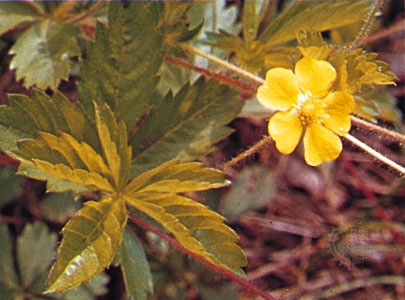
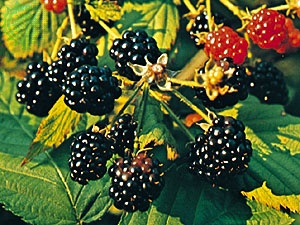 Members of Rosaceae are generally woody plants, mostly shrubs or small to medium-size trees, some of which are armed with thorns, spines, or prickles to discourage herbivores. The genus Rubus (blackberries (blackberry), raspberries (raspberry), and brambles) chiefly contains arching shrubs or scramblers of irregular, often tangled appearance. Herbaceous perennials are found in several Rosaceae genera, most notably Fragaria, Potentilla, Geum, and Aruncus. Most members of Rosaceae have alternate leaves, with opposite leaves being found in a very few species. Small leaflike structures called stipules are routinely present at the base of the leaf stalks.
Members of Rosaceae are generally woody plants, mostly shrubs or small to medium-size trees, some of which are armed with thorns, spines, or prickles to discourage herbivores. The genus Rubus (blackberries (blackberry), raspberries (raspberry), and brambles) chiefly contains arching shrubs or scramblers of irregular, often tangled appearance. Herbaceous perennials are found in several Rosaceae genera, most notably Fragaria, Potentilla, Geum, and Aruncus. Most members of Rosaceae have alternate leaves, with opposite leaves being found in a very few species. Small leaflike structures called stipules are routinely present at the base of the leaf stalks.The flowers (flower) in the rose family vary from small to large and range from white to various shades of yellow, pink, orange, lavender, or red. Blue flowers are rare in the order. Typically, the flowers are rather flat or shallowly cup-shaped, produce nectar, and are pollinated by a variety of insects. The basic structure of flowers in the family is relatively primitive. They are almost always bisexual, with both male (stamens) and female (carpels (carpel)) parts present in the same flower. When separate male and female flowers exist, they may be on the same or on different plants. The flowers are usually radially symmetric. The sepals and petals usually number four or five. The sepals and petals are almost always free from each other. Flowers of Rosaceae species have some type of hypanthium, or floral cup, from whose rim the sepals, petals, and stamens arise. The hypanthium is often lined with nectar-producing tissue.
The stamens are often numerous, and they occur in whorls of four or five. The filaments are usually free; when a hypanthium is present, the stamens attach to its rim. Each flower typically has two to many carpels. Only a few groups have one carpel, notably the genus Prunus (plums (plum), cherries (cherry), peaches (peach), and apricots (apricot)). The carpels are free from each other in most cases, as exemplified by the spirea and rose subfamilies of the rose family. In the apple subfamily, the carpels are completely united into a compound gynoecium. The ovary is most often superior, and the sepals, petals, and stamens are inserted below the base of the ovary. When a hypanthium is present, the flower parts (sepals, petals, and stamens) are attached to the rim (perigynous), although they may appear to be attached to the ovary. The apple subfamily of the rose family normally has a distinctly inferior ovary with the sepals, petals, and stamens arising above the gynoecium.
The rose family shows a wide diversity of fruit types. Many have dry fruits (follicles) that split open at maturity to release the seeds for dispersal; follicles come from one simple carpel. Some dry fruits in the family do not open at maturity, examples being the achenes (achene) of some members of the rose subfamily. Fleshy fruits are frequent in the family. Drupes (drupe), characteristic of Prunus, and drupelets, such as raspberries (raspberry) and blackberries (blackberry) of the genus Rubus, develop from simple carpels. The rose family is divided into four very distinct subfamilies based primarily on fruits: Spiraeoideae (Spirea subfamily), with follicles; Rosoideae (rose subfamily), with achenes or, in Rubus, drupelets; Amygdaloideae, also called Prunoideae (plum subfamily), with drupes; and Maloideae (apple subfamily), with pomes. As a member of Rosoideae, strawberries have achenes (achene), although this is not obvious to the casual observer, as they are tiny and occur on the surface of the enlarged flower axis, or receptacle. The pome is unique to Maloideae and is a fleshy fruit in which the carpels are surrounded by an enlarged hypanthium. In most, but not all, Maloideae, the carpels are partly to completely fused to each other and to the sides of the hypanthium and are thus inferior to varying degrees. Some pomes are fleshy throughout, others have a membranous, or papery, core, and others contain hard nutlets. Examples of pome fruits are apples, pears, quinces, loquats, serviceberries, mountain ashes, hawthorns, and fire thorns.
 Members of Rhamnaceae, or the buckthorn family, are characterized by woodiness, stamens (male) alternating with sepals (opposite petals, when present), a disk of tissue developing under or around the ovary, and joined bases of flower parts that form a cup (hypanthium) surrounding the ovary. The Rhamnaceae family is characterized by simple leaves, well-developed sepals, stamens opposite petals, a prominent hypanthium, and a two- to five-chambered ovary in which ovules arise basally. Most fruits are either berrylike (with an inner hard layer) or dry capsules that shed their seeds. A notable tendency in the family is its members' adaptations to dry climates: small and crowded leaves, shortened branches, thorniness or spininess, and a low, shrubby, intricately branched habit.
Members of Rhamnaceae, or the buckthorn family, are characterized by woodiness, stamens (male) alternating with sepals (opposite petals, when present), a disk of tissue developing under or around the ovary, and joined bases of flower parts that form a cup (hypanthium) surrounding the ovary. The Rhamnaceae family is characterized by simple leaves, well-developed sepals, stamens opposite petals, a prominent hypanthium, and a two- to five-chambered ovary in which ovules arise basally. Most fruits are either berrylike (with an inner hard layer) or dry capsules that shed their seeds. A notable tendency in the family is its members' adaptations to dry climates: small and crowded leaves, shortened branches, thorniness or spininess, and a low, shrubby, intricately branched habit. Elaeagnaceae, or the oleaster family, contains shrubs to small trees, which are often armed with spines. Leaves are simple, entire on the edges, copiously covered with white hairs, and usually spirally arranged on stems. The flowers are bisexual, with four sepals inserted on a hypanthium but with petals lacking. The fruit is fleshy and drupelike, with one bony seed.
Elaeagnaceae, or the oleaster family, contains shrubs to small trees, which are often armed with spines. Leaves are simple, entire on the edges, copiously covered with white hairs, and usually spirally arranged on stems. The flowers are bisexual, with four sepals inserted on a hypanthium but with petals lacking. The fruit is fleshy and drupelike, with one bony seed.The single species of Barbeyaceae, Barbeya oleoides, is a small opposite-leaved tree with male and female flowers on separate individuals. The flowers are wind-pollinated and lack petals. The single-seeded fruit is a nut. The two species of Dirachmaceae (Dirachma socotrana, D. somalensis) are shrubs that possess small strongly-toothed leaves. The flowers are relatively large with both sepals and petals. The fruit is a capsule that splits open to reveal dense woolly hairs inside.
Plants of the remaining families in Rosales (Ulmaceae, Cannabaceae, Moraceae, and Urticaceae—often referred to as the suborder Urticineae) are evergreen or deciduous trees, shrubs, vines (both woody and herbaceous), or herbs (mostly in the family Urticaceae). They commonly have mucilage cells and canals and often have cystoliths (which probably serve as protection from insects), as in Urticaceae, or laticifers (latex cells), as in Moraceae. The leaves are usually alternate, rarely opposite, in Moraceae and Ulmaceae, but commonly opposite in Urticaceae and some members of Cannabaceae. Most leaves are simple and often oblique at the base. A few species have pinnatifid or palmately incised leaves (palmately lobed in Humulus, palmately compound in Cannabis).
In some species of Ficus, including the strangler figs, birds and bats drop fig seeds onto the branches of other trees. There the seeds develop aerial roots that grow down along the trunk of the supporting tree, enlarge, and gradually crush the host to death. Banyans (banyan) (F. benghalensis), which grow thick prop roots from their wide-spreading branches, may reach an immense size and resemble a dense grove of trees.
The four families of the suborder Urticineae are distinguished from the other families in Rosales chiefly by floral characteristics. In most members of the suborder, flowers are unisexual; that is, male and female structures occur in separate flowers. The ovary (female) has two carpels (ovule-bearing structures) but contains just one ovule (potential seed), which produces a single seed. Male flowers have only a few pollen-bearing stamens. Flowers are inconspicuous, lack petals, and are composed of four or five small greenish sepals. The fruits range from one-seeded dry achenes (sometimes with wings as in elms), to fleshy drupes (as in hackberries), to fleshy syconiums (figs), or frequently multiple fruits (fruits in which the ripened ovaries of many adjacent flowers are borne in clusters; these resemble the fruits of blackberries or raspberries, but in these the clusters are made up of the ripened ovaries of only a single flower).
Although a complex and highly evolved method of insect pollination is seen in Ficus, most species of these four families are wind-pollinated, and some species have adaptations that enhance this process. Pilea microphylla (artillery plant), for example, ejects its pollen in tiny explosive puffs. Many genera, particularly in the family Urticaceae, exhibit the same phenomenon. In the flower buds of the nettles (especially species of Urtica), the stamens are bent inward and held under tension (inflexed) in the bud. When the flower opens, the stamens are suddenly released and spring out with such violence that the anthers, or pollen sacs, are turned inside out, ejecting their pollen in a cloud. The pollen is then carried by the wind to the large brushlike stigmas of other flowers. Like most wind-pollinated flowers, these flowers tend to be inconspicuous, green, and lacking in petals.
Some species of Moraceae are pollinated by insects, particularly the figs, where complex interdependencies between the plants and their insect pollinators have evolved. Pollination is accomplished by small wasps called fig wasps (fig wasp) or gall wasps, of the genus Blastophaga. In the figs, separate male and female flowers are borne in a specialized inflorescence that consists of a hollow pear-shaped stem tip with the flowers on the inside. This structure, called a syconium, ultimately matures into a fig. The male flowers are usually arranged near the small opening at the upper end of the syconium, and the female flowers, much more numerous, line the interior. The female flowers are of two types, long-styled fertile flowers and short-styled sterile ones. The long-styled flowers eventually produce a single small one-seeded hard-shelled fruit termed the achene. The fig itself is actually a collection of many of these achenes surrounded by the fleshy tissue of the syconium. The short-styled flowers are called gall flowers; they do not develop fruits but are used as egg-laying sites by the gall wasps, which pollinate the other flowers while laying their eggs. The gall flowers then become a mass of pulpy abnormal plant tissue, the gall, on which the wasp larvae feed and in which they develop.
The three flower cluster types—male, long-styled female, and short-styled female (or gall flowers)—are produced in three distinctive syconia. The first type of syconium, produced in the spring, contains male flowers and gall flowers; each of the latter may contain one of the fig wasp eggs, deposited there in the spring by wasps that had just emerged from overwintering in another type of fig. These eggs produce wingless male and winged female wasps later in the summer. The male wasp bites through the wall of a gall containing a female wasp and mates with her. On leaving the fig to search for a suitable place to lay eggs, the female wasp becomes covered with pollen from the male flowers near the small exit hole at the tip of the fig. The second type of syconium, the true fig, bears only long-styled fertile female flowers. The female wasp, searching for egg-laying sites in summer, enters these figs and pollinates the flowers inside but does not lay eggs, because the styles are too long to suit the egg-depositing anatomy of the insect. The third type of syconium, produced in the autumn, contains only short-styled gall flowers. The eggs that are laid develop in the gall flowers and produce the following year's fig wasps.
 Members of the tribe Urereae (also known as Urticeae) are among the most conspicuous members of the family Urticaceae (the nettle family) because of their stinging hairs. The stings are frequently a short-term irritant, but contact with some species can cause pain or numbness that lasts for several days. Fatalities have been reported in humans and domesticated animals from contact with the stinging hairs of Urtica ferox and some species of Dendrocnide and Laportea. The stinging hairs commonly have a bulbous or enlarged base and a slender tubular portion containing silica bodies. The tips of the stinging hairs break off on slight contact, leaving a sharp point that readily penetrates the skin, much like a hypodermic needle, allowing the fluid of the stinging-hair cell to enter the flesh. The compounds producing the stinging sensation in Urticaceae include histamine, acetylcholine, and serotonin. The stinging members of Urticaceae are among the most noticeable, because of their irritating nature. In addition to the stinging members of the nettle family, a few other plants in the suborder Urticineae can cause skin irritations on contact.
Members of the tribe Urereae (also known as Urticeae) are among the most conspicuous members of the family Urticaceae (the nettle family) because of their stinging hairs. The stings are frequently a short-term irritant, but contact with some species can cause pain or numbness that lasts for several days. Fatalities have been reported in humans and domesticated animals from contact with the stinging hairs of Urtica ferox and some species of Dendrocnide and Laportea. The stinging hairs commonly have a bulbous or enlarged base and a slender tubular portion containing silica bodies. The tips of the stinging hairs break off on slight contact, leaving a sharp point that readily penetrates the skin, much like a hypodermic needle, allowing the fluid of the stinging-hair cell to enter the flesh. The compounds producing the stinging sensation in Urticaceae include histamine, acetylcholine, and serotonin. The stinging members of Urticaceae are among the most noticeable, because of their irritating nature. In addition to the stinging members of the nettle family, a few other plants in the suborder Urticineae can cause skin irritations on contact.Another feature characteristic of the nettle family and many members of the mulberry family (Moraceae) is the presence of cystoliths, deposits of calcium carbonate inside enlarged epidermal (surface) cells. They are visible as dots or variously shaped marks, especially in pressed, dried leaves. They may serve as some kind of protection from leaf-eating insects or other animals. Calcium carbonate deposits occur in another form in Chlorophora excelsa, the source of iroko wood, which is very durable and practically immune to termites and wood-rotting fungi. The wood in about 3 percent of the trees carries streaks or lumps of calcium carbonate called iroko stones, which are hard enough to dull woodworking tools.
Evolution
The key evolution within Rosales is the shift from showy flowers and insect pollination (rose family) to inconspicuous flowers and wind pollination. Several independent acquisitions of the ability to fix atmospheric nitrogen (nitrogen fixation) have occurred in the order. Rosaceae is the earliest diverging family in the order. The relationships between the complex of families including Rhamnaceae, Elaeagnaceae, Barbeyaceae, and Dirachmaceae are poorly understood. However, these families already show the tendency for reduction in flower size and loss of certain floral parts (usually showy petals). The four families of the suborder Urticineae demonstrate the end of this floral reduction, where the flowers are reduced to male or female structures only, and they rely upon wind pollination. Ulmaceae, or the elm family, is the least derived of these four families and still possesses bisexual flowers. Cannabis (hemp) and Humulus (hop) have long been problematic in terms of their placement with other members of the suborder. DNA evidence places them within the celtoid group (formerly called Celtidaceae) of the family Cannabaceae. Moraceae (fig) and Urticaceae (nettle) are closely related. The fig family exhibits diversification of fruit types, whereas the nettle family shows innovations in pollen dispersal. Both features are considered specializations that have permitted explosive speciation in these two families in comparison with their close relatives.
Members of all four subfamilies of Rosaceae are represented in the fossil record. The genus Spiraea, of the subfamily Spiraeoideae, is known from fossil fruits and leaves, and the related genus Physocarpus is represented in fossils of the mid- Tertiary Period. In the subfamily Maloideae, fruit and seed remains have been recognized from the genera Crataegus and Pyrus. Leaf fossils are described for Cydonia, Amelanchier, and Crataegus. In the subfamily Rosoideae, fruits of Potentilla and Rubus are known from the Pliocene Epoch (about 5.3 to 1.8 million years ago) and the Oligocene Epoch (33.9 to 23.1 million years ago) of western Europe, respectively. Leaves, thorns, branchlets, calyx fragments, and fruits of Rosa (rose genus) are frequently found in North America, Europe, and Asia dating from the Eocene Epoch to the end of the Tertiary (about 55.8 to 2.6 million years ago). The subfamily Amygdaloideae is represented by fossil fruit pits of Prunus from the Eocene to the Pleistocene and of Prinsepia from the Oligocene to the Pliocene.
Fossils considered to belong to the families Ulmaceae and Cannabaceae date back to the Turonian Stage of the Cretaceous Period (93.5 to 89.3 million years ago), and extant genera such as Ulmus (elms), Zelkova (keaki), Celtis (hackberries), Aphananthe, and Gironniera are known from the early Tertiary. In contrast, the early history of Moraceae and Urticaceae is not well known. The earliest record of Moraceae is in pollen from the middle Eocene (about 40 million years ago). The oldest fossil woods of the suborder Urticineae, those of the genus Ficoxylon in Moraceae, are from the Paleocene to Miocene of Africa and Madagascar. More-recent woods of this genus are also known from North America, Europe, and Cambodia.
- Boucicault, Dion
- Boucicaut, Jean II le Meingre
- Boudiaf, Muhammad
- Boudicca
- boudinage
- Boudin, Eugène
- Boudinot, Elias
- Boudjedra, Rachid
- Boudreau, Lou
- Boufarik
- Boufflers, Louis-François, duc de
- Boufflers, Stanislas-Jean, chevalier de
- Bougainvillea
- Bougainville Island
- Bougainville, Louis-Antoine de
- Boughton, Rutland
- Bouguereau, William-Adolphe
- Bouguer, Pierre
- bouillabaisse
- Bouillaud, Jean-Baptiste
- Bouillon
- Bouira
- Boulainvilliers, Henri de, comte de Saint-Saire
- Boulanger, Georges
- Boulanger, Nadia